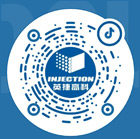Mainstream Methods for Metal Powder Preparation in Powder Metallurgy — Powder Metallurgy and Injection Molding Industry Chain
Mainstream Methods for Metal Powder Preparation in Powder Metallurgy
Metal powders are essential raw materials for powder metallurgy, MIM, and additive manufacturing. The main preparation methods include:
Mechanical Methods:
These include mechanical milling and cryogenic pulverization. They are simple and have high yields but result in powders with higher impurity content, poorer particle uniformity, and lower energy efficiency. Agglomeration issues are also common.Physical and Chemical Methods:
Atomization (Water/Gas):
Water Atomization: Uses high-pressure water to break molten metal into powder. It is low-cost and highly efficient, producing fine and uniform powders. However, powders are irregular, have rough surfaces, high porosity, and higher oxygen content, limiting large-scale applications.
Gas Atomization: Uses high-speed gas jets, resulting in spherical, smooth, low-oxygen powders with good flowability and uniform composition. It is suitable for high-quality applications but has higher costs than water atomization.
Plasma Rotating Electrode Process (PREP):
Produces highly spherical, pure powders with excellent flowability, ideal for aerospace and medical uses. However, the cost is high and fine powder yield is low.Combined Atomization:
Integrates water and gas atomization to improve powder quality and production efficiency, achieving finer, more uniform spherical powders.
In summary, atomization—especially gas and combined atomization—is the mainstream method for producing high-quality metal powders due to its efficiency and versatility. Future trends focus on improving fine powder yield, reducing oxygen content, and lowering production costs

 中文
中文
 英文
英文






